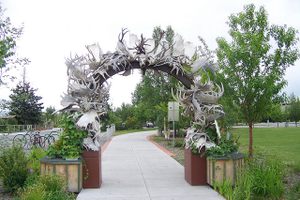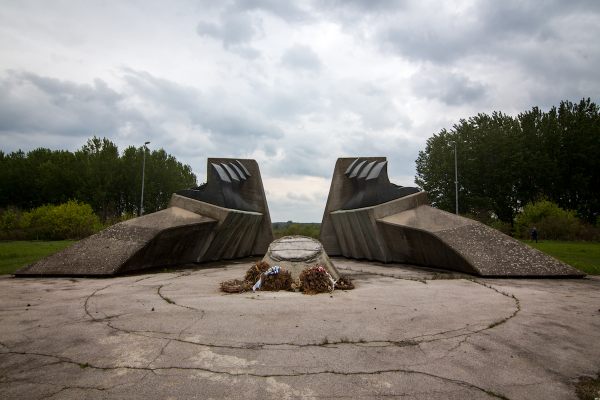About
This large monument features Russian and American pilots of the mid-20th century, and celebrates the strategic and social importance of Alaska as the staging ground for the America-Siberia Airway element of the program that ran from 1942 to 1945. The memorial honors the Lend-Lease program, which was part of a worldwide scheme that saw the United States end its neutrality before officially entering the war alongside its allies.
Over 8,000 U.S.-made aircraft and countless supplies were ferried to the warring eastern front from the Lower 48 states and over Canada to Ladd Field in Fairbanks, where several hundred Russian pilots took to the cockpit and flew them across the frigid Bering Strait and into Russia for use in the Japanese, German, and Italian theaters of war. The airplanes were lent to the Russians for free, though of course many of them—and their pilots—never returned home, and the scheme ended overnight when Japan surrendered.
Hundreds of Russians became part of the small city during that era, just as they had for decades—Alaska was only purchased from Russia in 1867, and was initially called “Seward’s Folly,” as many didn’t see the point in Secretary of State William H. Seward’s desire for the huge, largely-frozen and uninhabited landmass.
The cost of $7.2 million seemed sky-high, but that was before gold was discovered. Other booms of fur, fish, forestry, oil, and more recently, tourism have long made it seem like a bargain. Nearly all the locals would agree, even as they suffer a -50-degree morning.
The Lend-Lease program is celebrated in effigy in Alaska, which was a U.S. territory at the time and didn’t become a state until 1959. Designed and created by Alaskan sculptor and printmaker R.T. Wallen, the memorial was only unveiled in 2006, but plaques alongside the large statues and the propeller commemorate the Women Airline Service Pilots (WASP) who also took part in the effort.
Related Tags
Community Contributors
Added By
Published
October 26, 2018














































